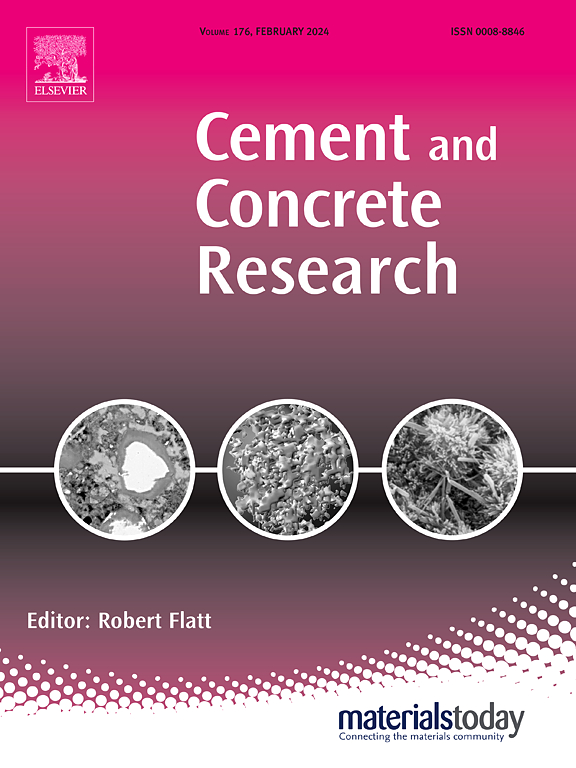应变硬化胶凝复合材料(SHCC)的细观孔隙结构:与基体流动性的关系及其在细观力学建模中的应用
IF 13.1
1区 工程技术
Q1 CONSTRUCTION & BUILDING TECHNOLOGY
引用次数: 0
摘要
应变硬化/工程胶凝复合材料(SHCC/ECC)的细观孔隙结构决定了其开裂强度分布,从而影响了拉伸性能。虽然孔隙分布通常归因于基质流动性,但对于SHCC来说,这种关系很少被量化。本研究通过将材料加工参数、真实孔隙结构和SHCC的拉伸开裂行为联系起来,解决了这一空白。利用x射线计算机断层扫描(X-CT),分析了SHCC试样的三维细观孔隙信息(包括孔隙度、尺寸分布、形状因子和空间分布),并将其与基质流动性进行了关联。讨论了混合和浇注过程中孔隙形成的机理。建立了细观孔隙结构与基质流动性之间的统计相关性,并将其应用于预测开裂强度分布。这种相关性表明,与传统方法相比,实验结果更加吻合。这些发现通过提供一个定量框架来解释基质流动性效应,从而推进了SHCC的建模和优化。本文章由计算机程序翻译,如有差异,请以英文原文为准。
Meso-level pore structures of Strain-Hardening Cementitious Composites (SHCC): Correlation with matrix flowability and application in micromechanical modeling
The meso-level pore structure of Strain-Hardening/Engineered Cementitious Composites (SHCC/ECC) critically governs cracking strength distribution, and consequently the tensile performance. While pore distributions are typically attributed to matrix flowability, this relationship remains rarely quantified for SHCC. This study addresses this gap by linking material processing parameters, realistic pore structures, and tensile cracking behaviors of SHCC. Using X-ray computed tomography (X-CT), the 3D meso-level pore information (including porosity, size distribution, shape factors, and spatial distribution) of SHCC specimens was analyzed and correlated with matrix flowabilities. Mechanisms governing pore formation during mixing and casting were discussed. A statistically derived correlation between meso-level pore structures and matrix flowability was established and applied to predict cracking strength distributions. This correlation demonstrated improved agreement with experimental results over conventional methods. These findings advance the modeling and optimization of SHCC by providing a quantitative framework to account for matrix flowability effects.
求助全文
通过发布文献求助,成功后即可免费获取论文全文。
去求助
来源期刊

Cement and Concrete Research
工程技术-材料科学:综合
CiteScore
20.90
自引率
12.30%
发文量
318
审稿时长
53 days
期刊介绍:
Cement and Concrete Research is dedicated to publishing top-notch research on the materials science and engineering of cement, cement composites, mortars, concrete, and related materials incorporating cement or other mineral binders. The journal prioritizes reporting significant findings in research on the properties and performance of cementitious materials. It also covers novel experimental techniques, the latest analytical and modeling methods, examination and diagnosis of actual cement and concrete structures, and the exploration of potential improvements in materials.
 求助内容:
求助内容: 应助结果提醒方式:
应助结果提醒方式:


